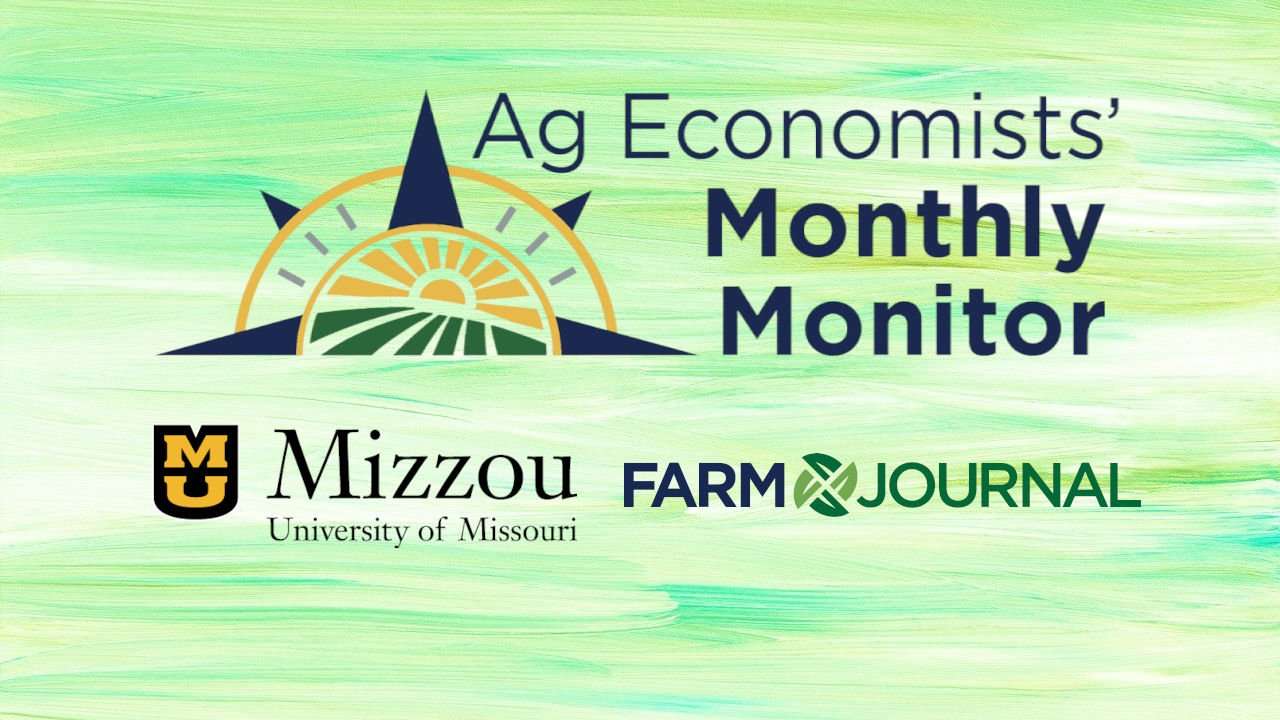Source: Monthly Monitor – The Monthly Monitor is a new report compiled by the University of Missouri’s Rural and Farm Finance Policy Analysis Center and Farm Journal that surveys economists nationwide on their projections of agricultural trends.
Monthly Monitor sentiment reflects healthy outlook for farm production even as abnormally hot weather and other factors, including workforce concerns and the geopolitical landscape, influence agricultural markets.
Scott Brown, director of the policy center, is forecasting a positive outlook for farm finances even as the weather has created significant challenges this past year in North America.
How do economists describe the current economic health of agriculture?
The economists we surveyed in July had a more positive future outlook despite challenges related to abnormal weather and other factors. July’s results showed more positivity about the next year than we saw in June. Overall, economists feel more positively about the crop side of the ag economy equation than they do about livestock. We should note that despite all the challenges voiced by economists, the American farmer is seeing continued productivity and efficiency gains that lead to strong balance sheets for their operations.
What were the prominent trends as they relate to weather in the latest Monthly Monitor?
In July, economists indicated abnormal weather conditions affected multiple pieces of the broader ag economy puzzle, including commodity markets and the general outlook for the economic health of the industry for farms and beyond. When asked about their sentiments on the overall financial health of the farm economy, 64% of responding economists had a positive view of the crops sector and 55% had a negative view of the livestock sector. Most economists surveyed expect the overall economic health of the agriculture industry to remain unchanged over the next year.
How is abnormal weather affecting commodity markets?
Within the realm of crops, abnormal weather patterns are directly impacting prices in the short term. In the long term, economists are looking at how yields will be impacted as well as market implications. The economists expect corn and soybean yields to be lower than current Department of Agriculture (USDA) projections, but they had a wide range of yield estimates that showed the amount of variability in rainfall across key crop growing regions.
From a livestock perspective, we’re continuing to see record cattle prices and shifts in inventory due to management changes in light of abnormal weather patterns. The cattle industry is seeing the largest impacts from dry weather as pastures are stressed and hay remains scarce and at record high prices. Overall, livestock feed costs are staying above longer-run averages, which is keeping meat production growth slow.
What other factors are influencing farm income and commodity markets that are currently on economists’ radar?
Economists are watching how production expenses, inflationary pressure and declining crop prices are impacting current and projected producer margins and resulting farm income levels. Commodity market influences include changes in consumer demand, new market opportunities for agricultural products and political issues domestically and abroad. However, we tend to focus on a few themes when discussing the key factors impacting farm income and agricultural markets. To expand our horizons, we asked economists to share factors or events not currently covered by the media but could impact agriculture. Economists are watching workforce concerns, commerce implications of California’s Proposition 12 and the potential for a recession in China.
What factors will impact crop prices in the next six months?
Beyond weather, economists suggest that global competition and geopolitical risks could impact crop prices in the next six months. South America is a major rival in corn and soybean markets, so watching what happens with export demand and the competitiveness of U.S. commodities will be very important.
What factors will impact livestock prices in the next six months?
Sentiment from the July Monthly Monitor indicates that economists are worried about feed costs and how they could affect livestock prices and profitability. When asked to project prices, economists saw a more positive outlook for pork and beef prices than for milk. Specifically, milk supplies have been slower to adjust to the lack of profitability than beef or pork supplies. An additional area of concern among the economist group included domestic and international demand. Although the past couple years saw strong demand for U.S. exports, we are a bit more cautious when looking at the remainder of 2023 and beyond. We are eager to see how economists’ sentiment and concerns shift as we approach the latter half of 2023.



